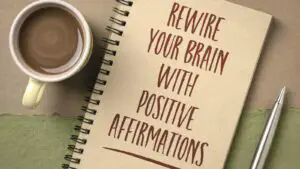For thousands of years, meditation has been an integral part of many spiritual and religious practices. However, it wasn’t until scientists confirmed that meditation is powerful and beneficial that people looked at it with some skepticism and fear.
Nowadays, meditation is being used as a tool to quiet the mind, as a remedy to heal people from stress, and as a therapy to reduce signs of anxiety. However, as a practice that evokes peacefulness and calm, meditation might make people fall asleep, and you might wonder whether it is okay.
It is safe to fall asleep with meditation and even recommended if a person suffers from a circadian rhythm disorder. There are many guided meditations created for this very purpose – to assist an individual with falling asleep – and it all comes down to finding the right one.
While it is perfectly okay to fall asleep with meditation, it is also essential to choose the right type of meditation for the best experience.
Relationship between Meditation and Falling Asleep
Have you ever heard of The Circadian Rhythm? Even if you hear this term for the first time now, you have surely experienced its presence in your personal life. The Circadian rhythm is an internal 24-hour process that regulates our “sleep-wake cycle.” Sometimes it is also referred to as an “internal clock.” You might be familiar with this commonly used term.
The circadian rhythm regulates our sleep patterns; thus, disruption of this cycle can negatively affect our health, be it physical or mental. For example, problems with sleeping can lead to eating disorders, physical weakness, mood swings, and lack of focus. This rhythm can be interrupted by stress, anxiety, fear, overthinking, and a busy mind; therefore, bringing it back to balance is extremely important.
Nevertheless, this internal cycle realigns to regular within a couple of days without severe consequences when the rhythm is out of sync due to long-distance travel (jetlag).
Science confirms that meditation can reduce heart rate and respiratory rate, which are associated with relaxation and the state before falling asleep. A well-functioning internal clock is crucial for our overall wellbeing, and meditation – as a practice – can help maintain or restore it in case it’s disrupted. Amongst so many different styles of meditation, how do you know which one is suitable for falling asleep?
The best meditations for falling asleep
A dozen types of meditations are available that provide similar benefits, but unfortunately, not all of them are suitable to practice before falling asleep. For example, active types of meditation, such as dynamic meditation, involve active movements to release the stagnant energy in our bodies; thus, people feel very energized, focused, and awake after this type of meditation.
Chanting, Mantra, and Metta (Loving-kindness) meditations involve reciting words or sounds, which requires focus. While the mind is more settled after practicing these types of meditations, they don’t provide the level of relaxation needed for falling asleep.
The three best types of meditations for falling asleep are guided meditation for sleep, Yoga Nidra, and pink noise. Pink noise is not a meditation per se, but it stimulates relaxation; therefore, it’s widely used for falling asleep.
Guided meditations
Guided meditation is a type of meditation where the teacher guides the practitioner with their voice through a relaxing experience. In the past, people had to visit meditation or yoga centers to practice this type of meditation, but with technological developments, guided meditations have become easily accessible to people around the world via Meditation apps and on the YouTube platform.
Almost every single meditation teacher now has their own recorded meditations, from traditional Full Moon to popular visualization or Law of attraction Meditation. Bedtime meditations are very popular to record as well; therefore, finding one is not that difficult but choosing the best one to listen to might be challenging.
When we fall asleep, our brain still processes the information even if it remains not responsive. Scientists call it “standby mode.” Therefore, it is imperative to select the right meditation to listen to because whatever we hear while we (fall) sleep is logged in our memory.
The script and the length of guided meditations vary from teacher to teacher, as well as the tone of voice. When choosing the right guided meditation for falling asleep, the script shouldn’t put your brain to work but rather relax. The teacher’s voice should be pleasant to your ears, and the length of the meditation should help you fall asleep without waking you up at the end of the recording. For the latter, it is advised to avoid guided meditations with a gong (or another instrument) sound, which announces the end of meditation.
Yoga Nidra
Yoga Nidra is one of the most popular guided meditation techniques that people use to assist in falling asleep. While Yoga Nidra is a practice (not meditation), teachers and practitioners worldwide refer to it as “meditation” because it has all elements of guided meditation: guidance, passive visualization, deep relaxation, and moments of stillness. During those moments of stillness, practitioners tend to fall asleep, and this is one of the main reasons why Yoga Nidra is so popular among people with insomnia.
It is worth mentioning that some people mistake Yoga Nidra with body scan meditation, and there is a very good explanation for it. Yoga Nidra practice has eight phases, and one of them is the body scan phase, known as the rotation of consciousness. In time, this phase became a practice on its own, and now there are hundreds (if not thousands) of body scan meditations to choose from.
During the body scan, the meditation practitioner is gently guided through the parts of the body (aka “scanning”) from the toes to the top of the head, and it is not uncommon to doze off without completing the practice.
To experience the difference between Yoga Nidra and body scan meditation, try each of them and choose the one which’s script and teacher’s voice resonate with you the most.
Pink noise
Can you remember those nights when you fell asleep to the sound of rain or leaves rustling? These sounds of nature are known as pink noise. Pink noise is prevalent in nature with steady, consistent, and calm sounds, such as steady rain, ocean waves, or strong wind.
Pink noise is a background noise with a wide range of frequencies, with the lower frequencies appearing louder and higher frequencies being heard less intensely. An example of this could be a rainy evening in a busy city. The sounds from the street (cars, sirens) are high-frequency sounds and the sound of the rain – low frequency. The rain diminishes the street sounds by providing a soothing effect, and the sound of rain becomes more dominant.
Using pink noise for falling asleep is safe and has no downside. In addition, scientists confirm that steady pink noise significantly reduces brain wave complexity and improves sleep quality.
Which app to use for sleep?
There are many meditation apps available with meditations for falling asleep. The difference between them is whether they are free or have a monthly fee, the variety of meditations and whether you can join live classes with the teacher.
Among so many meditation apps in the market, the most popular are: Aura app, Calm, the beginner-friendly Smiling mind app, Headspace, Sattva, and Insight timer. If you don’t feel like paying a monthly (or yearly) fee for the app, YouTube is filled with high-quality meditations for falling asleep. You can also find guided meditations by spiritual teachers such as Sri Sri Ravi Shankar, Sadguru, Eckhart Tolle, Deepak Chopra, Dr. Wayne Dyer, and Thich Nhat Hanh.
Final thoughts
Using meditation for falling asleep can help maintain a healthy Circadian rhythm and restore it faster once it’s disrupted. In addition, this safe practice can improve the quality of sleep, which is essential for our mental and physical wellbeing.
Finding the meditation that would tick all the boxes, aka your requirements, takes some time, but the deep rest is guaranteed once discovered.








